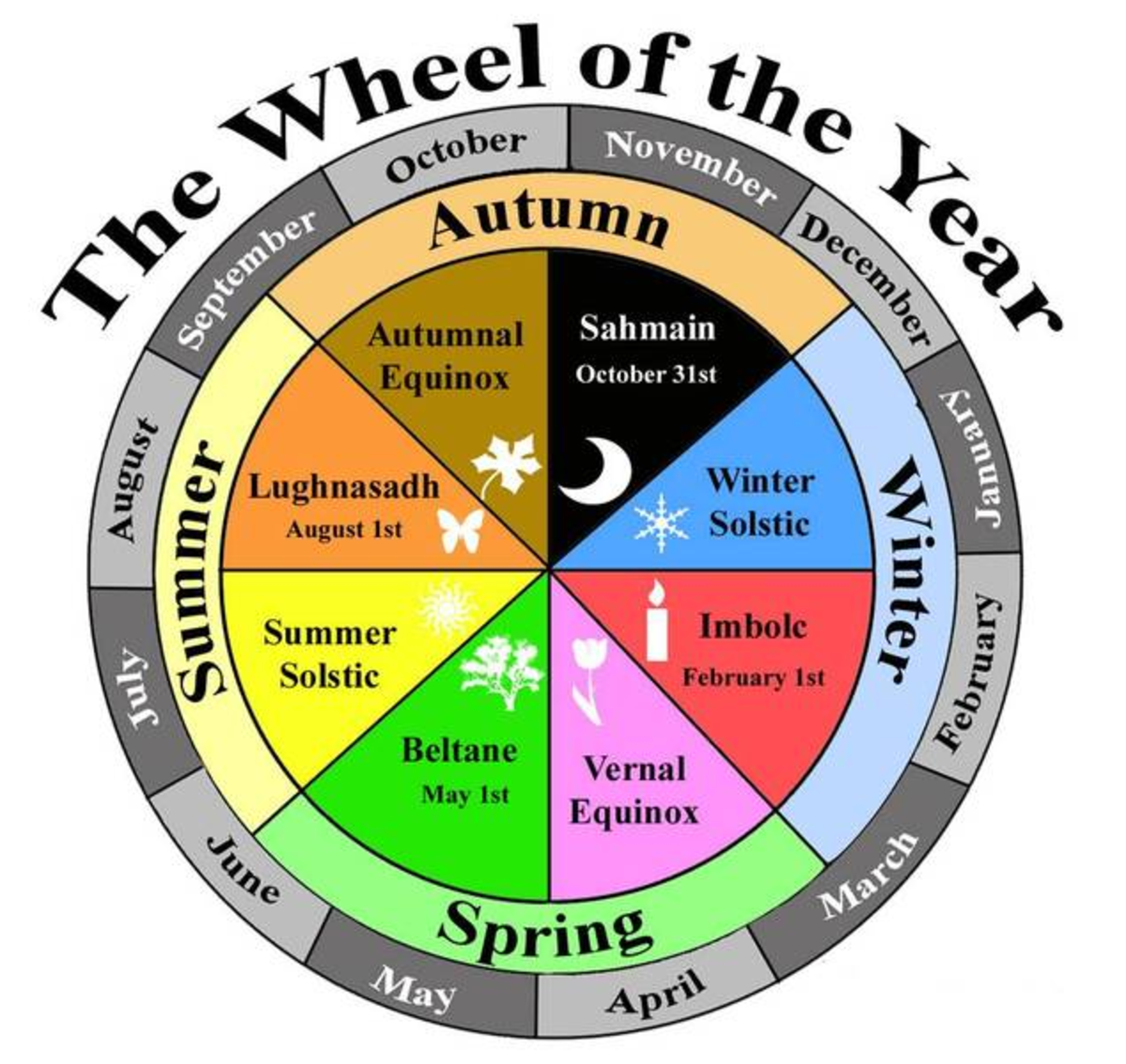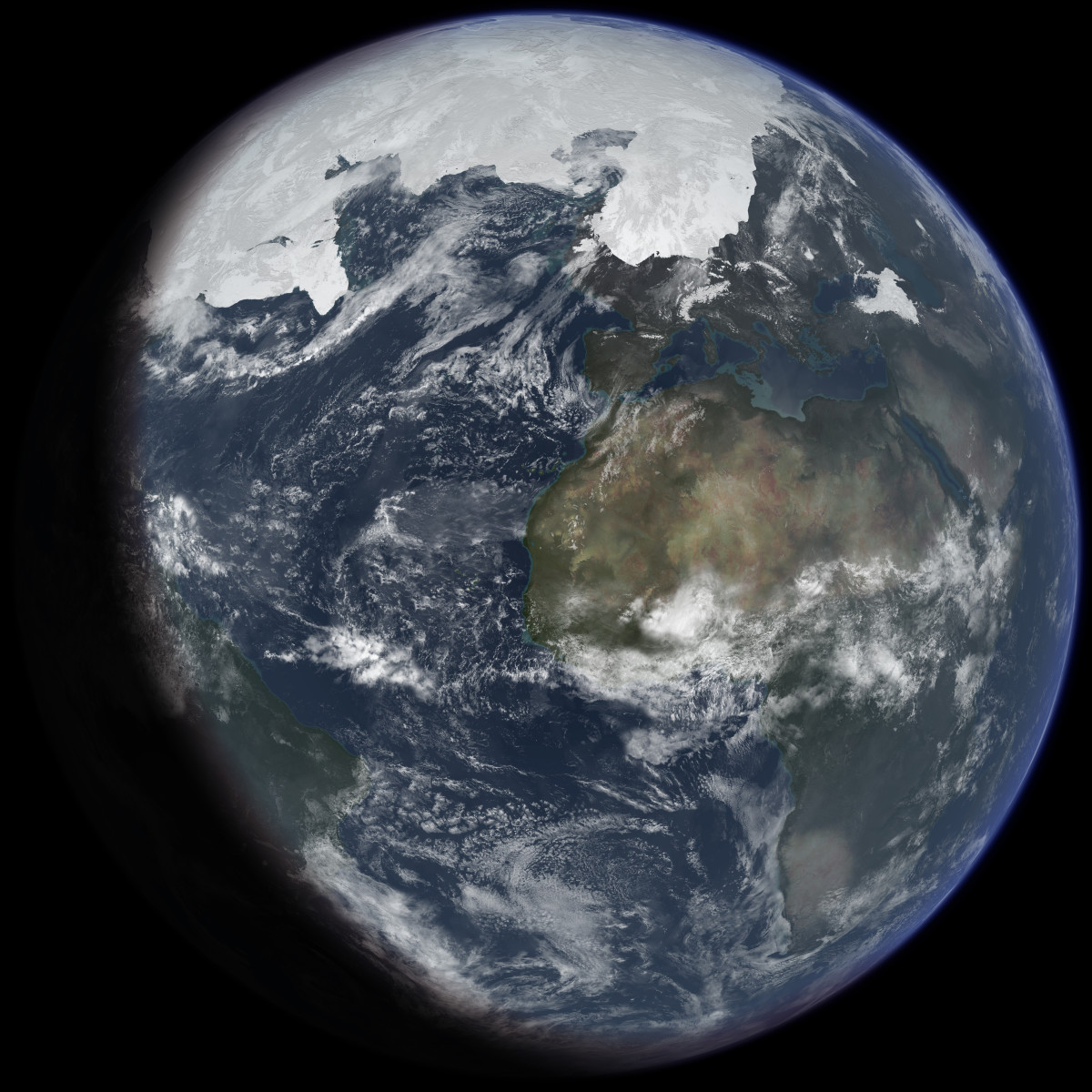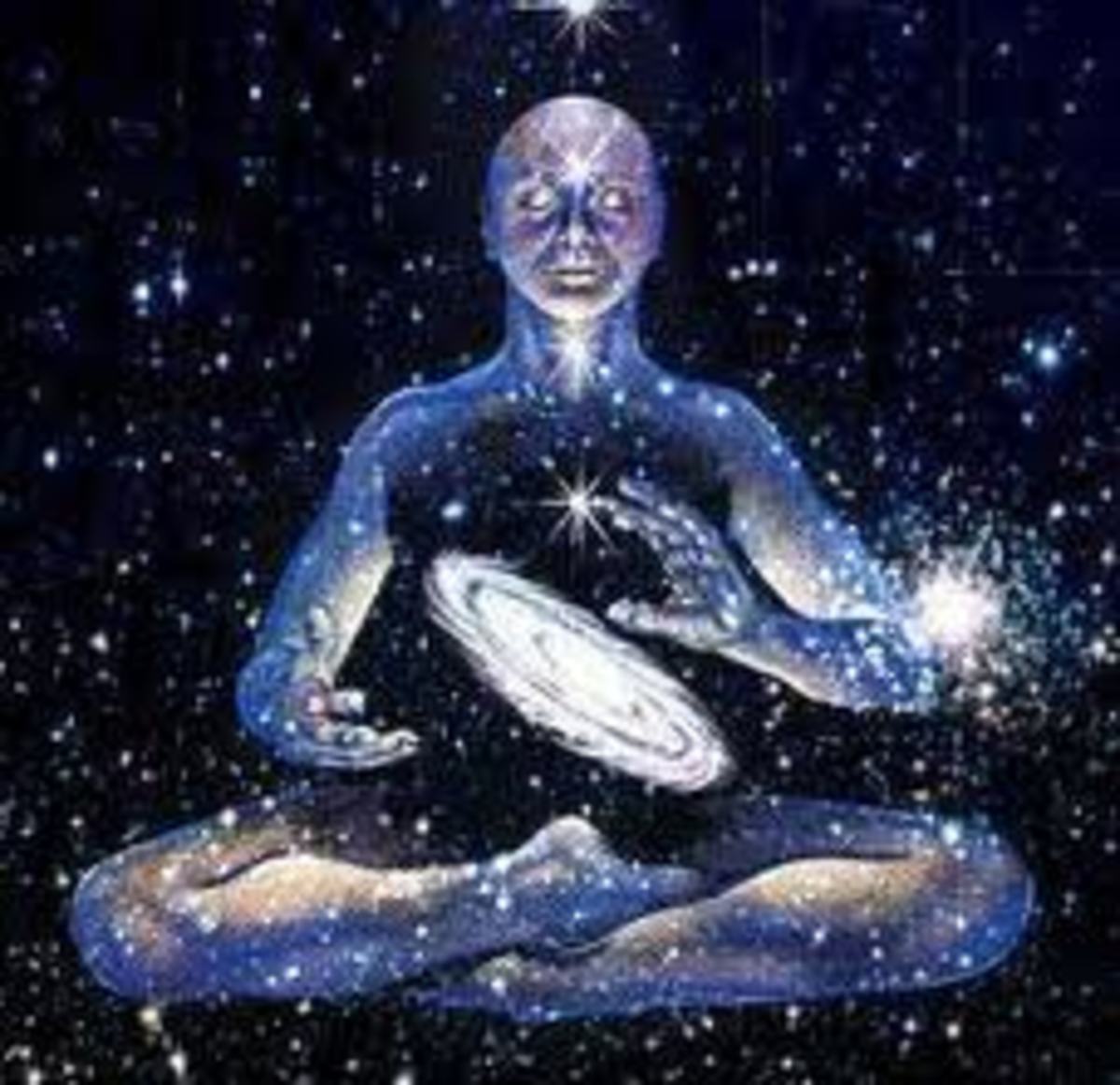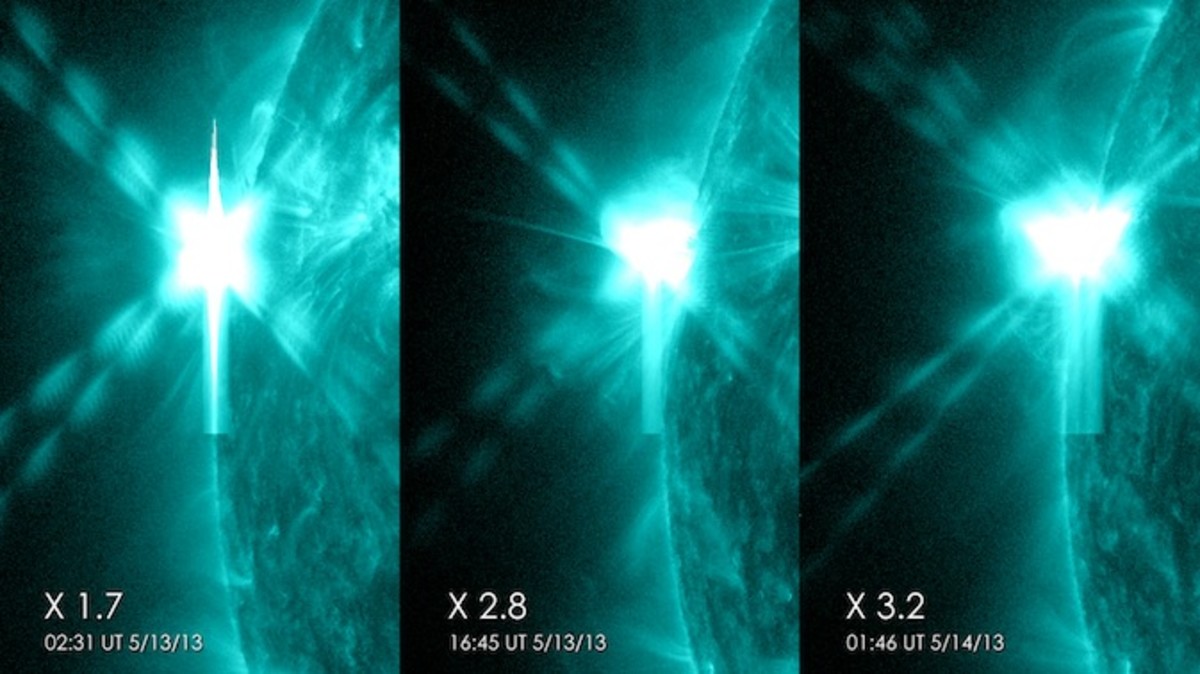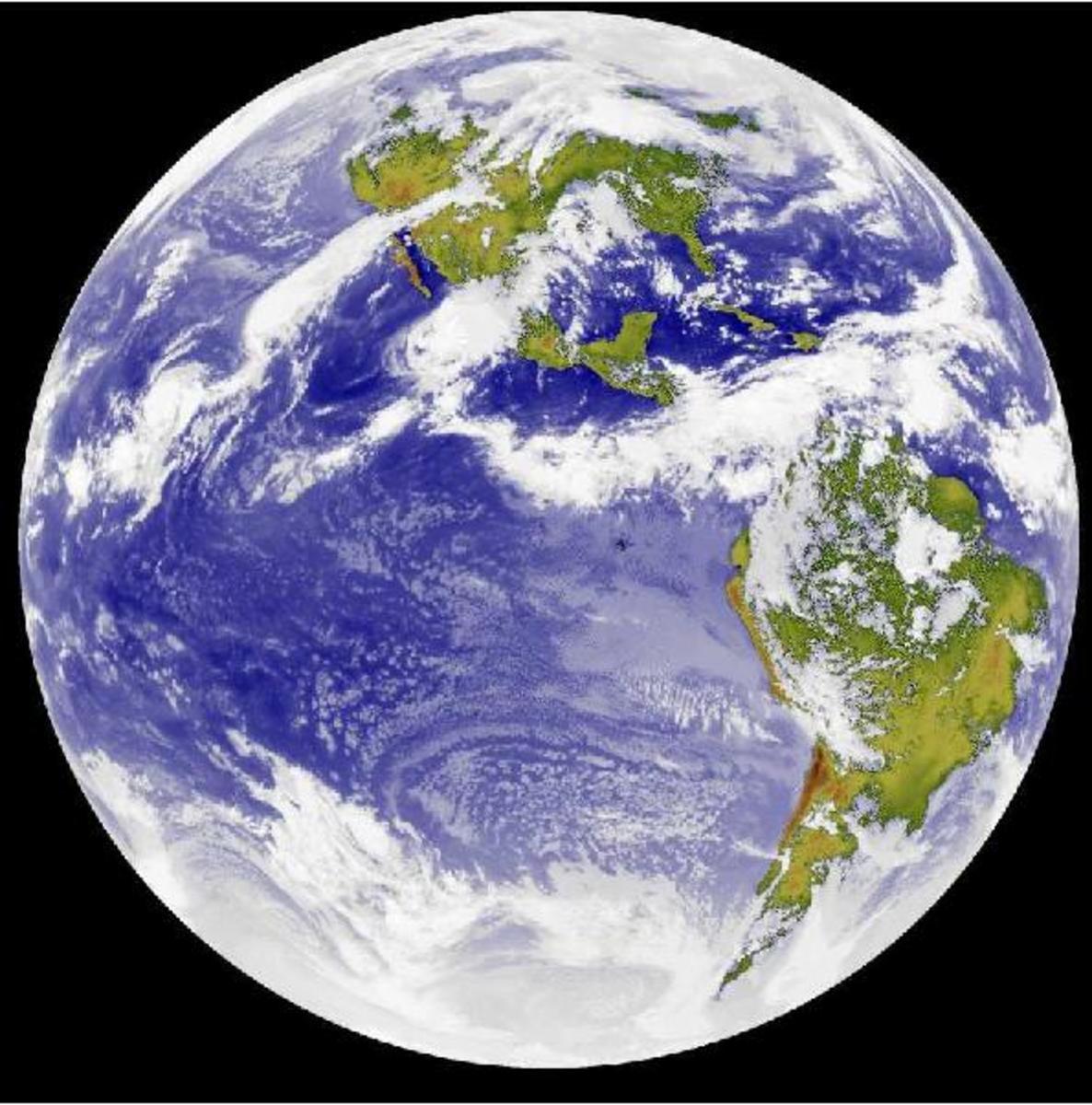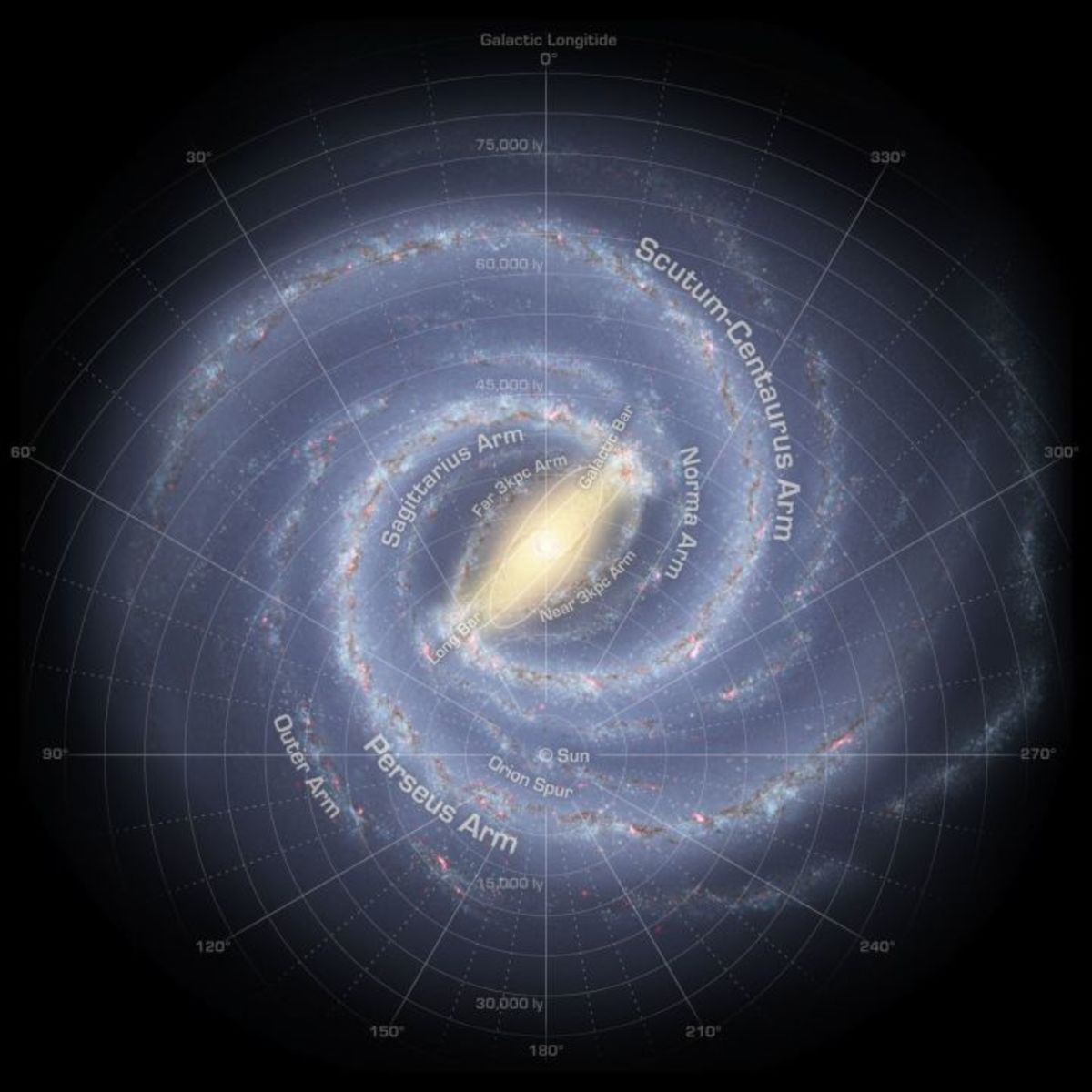About the Equinox
To understand how the equinox works, visulalizing earth from space and its relation to the sun and constellations helps.
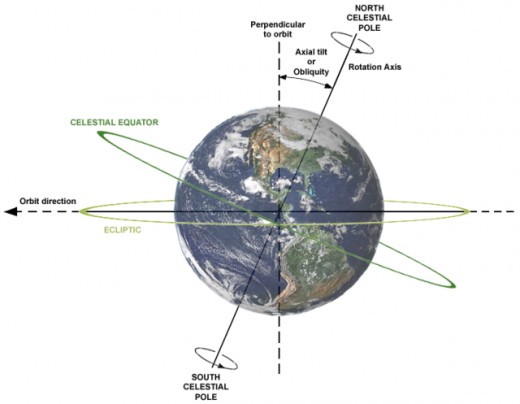
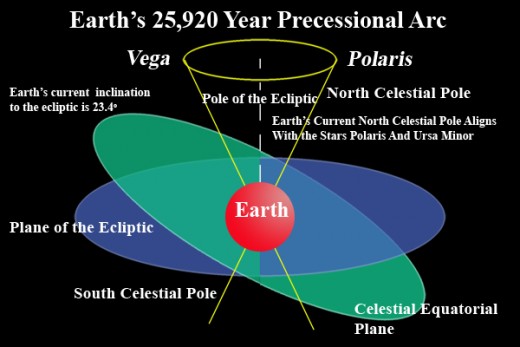
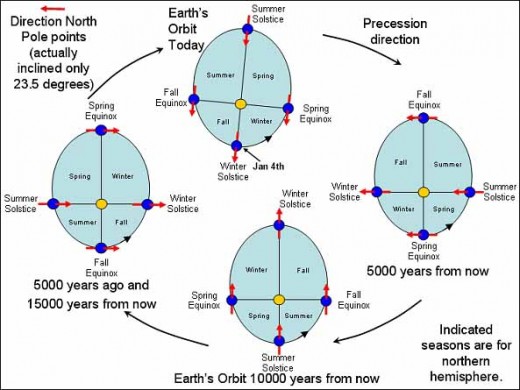
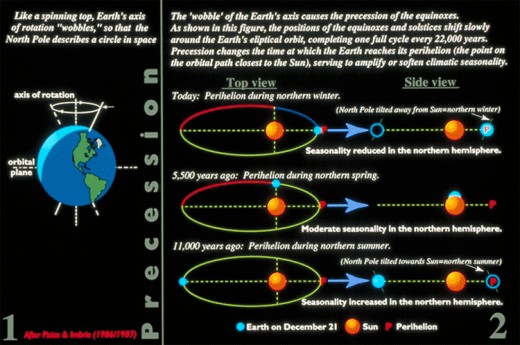
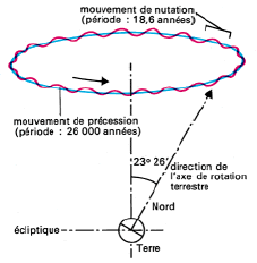
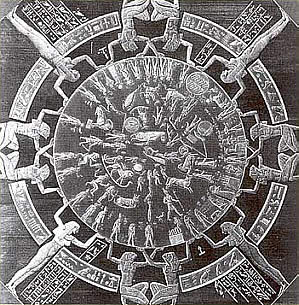
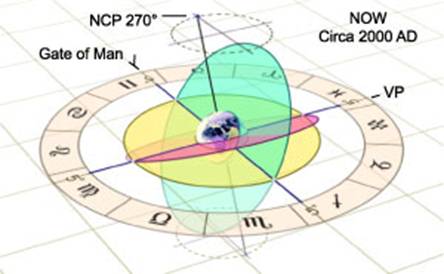
The equinox is an imortant marker in the seasons on earth.
The equinox is that point where the equator of the Earth is in alignment with the Sun-Earth ecliptic or Earth's orbital plane around the sun. Twice a year the equator of the Earth is in line with the ecliptic at that point where it faces the sun, thus positioning the sun directly over the equator for a moment in time. On these two days, the lengths of night and day are equal all over the planet; 12 hours of daylight and 12 hours of darkness. These times are on or about March the 21st and September the 22nd give or take a day due to influences from the other planets, primarily Jupiter and Venus. In the Northern hemisphere, the spring equinox is on March 21st and the fall equinox is on September 22nd. For the Southern hemisphere the exact reverse is true tor the two dates.
The spin axis of the Earth is inclined by some 23.5 degrees to the ecliptic with the North Pole leaning toward the constellation of Cancer according to the tropical system of alignment. Now this is not exactly true except that astronomers mark the spring equinox as being the first day of Aries. However, due to the motion of the poles over approximately 25,800 years, the sidereal vernal equinox point (S.V.P.) moves slowly in relation to the zodiacal constellations. This is known as the precession of the equinox. Currently the sidereal vernal equinox point for March 21st according to the Gregorian calendar is located at about 5 degrees of Pisces (epoch 2000 from the naval ephemeris) and not zero Aries as held in the tropical system or as seen in many astronomical journals and maps. According to this system, the Age of Aquarius still lies in the future. According to this system, the North Pole leans toward 5 degrees of Gemini and not to 0 Cancer.
The equinox varies slightly from year to year due to the influences of the other planets on Earth, primarily Venus and Jupiter, but not excluding the others. This causes extreme complexity in the Earth's orbit that is now known as a Poincare orbit. In addition, the influence of the moon in orbit around the Earth causes the Earth to meander in its orbit around the Sun due to the earth and moon orbiting around each other in their common barycenter. Though the Earth Keeps an approximately similar orbit from year to year, the fact is there are huge numbers of cycles that we are just beginning to appreciate. Thus, the actual equinox can be early by as much as a day or late by a similar amount depending on the position of Jupiter, Venus and the Moon in relation to the Earth-Sun line. One of these cycles is based on orbital eccentricity that causes orbital precession and elongation. Further, as the orbit of the Earth is slightly elliptical, the summer period in the northern hemisphere is slightly longer than the summer in the southern hemisphere. This is due to the aphelion of Earth's orbit lining up to January 4th, where Earth is closest to the sun. Thus, as the orbit precesses and elongates, the distribution of the equinoxes can become slightly skewed and the two halves of the year unequal.
According to traditions around the world, some hold the equinox point as being the beginning of the new cycle or New Year. Other traditions mark their starts at the winter solstice. Only a handful hold the summer solstice and fall equinox as the start point. Thus most great megaliths around the world that are oriented to the stars and sun marking either the winter solstice or the spring equinox. In the Christian world, we mark the Easter festivals around the spring equinox, except where government intervention has shifted Easter for the last few decades. Traditionally, Easter was centered around the spring equinox where the Passion of the Christ is played out. Deeper in history and close to the Arctic Circle, the rebirth of the savior is marked around the winter solstice as the archetype of the death and resurrection of the Christ.
The spring equinox has been and is held in high regard in the northern hemisphere as it marks the birth of the new growth in the natural world that will ultimately be our savior once more. This is based on a material reality and projected into the stars that serve as a prognosticating system so we can time plantings or connect with wild migrations. This is generally true and has been by and large reliable for many ancient and even some contemporary peoples. With changes in climate though, there will be a severing of natural connections until we learn the new patterns. But climate change is not all we have to watch out for.
Many ancient structures around the world are aligned facing north-south and east-west. This allows them to mark important milestones in the year such as the equinoxes. In Chichen Itza is a remarkable Maya pyramid to the sun that marks the spring equinox with a shadow of the feathered serpent Kulcalchan (Quetzalcoatl in the Aztec parallel) descending the side of the pyramid. This occurs only during the spring equinox and no other day of the year. At the fall equinox, the serpent shadow ascends the pyramid. The monument at Stonehenge also marks important astronomical events including the equinoxes as do the pyramids in Egypt and many other sites.
In the ancient world, being able to predict events was important for agricultural events and to survival itself and thus held in extremely high regard. In Egypt during the 4th Dynasty, the year's start was marked by the sacred Apis bull, as at that time, the Apis marked the spring equinox. In particular, the astronomer-priests looked to the helical rising of Sirius, close to Taurus, which is the modern equivalent in the sky. Apis of Egypt and from which we ultimately derive our letter 'A'. The helical rising of Sirius, just before the sun rise marked the time of the Nile inundation that renewed the lands for the year’s crop to follow. This ability to predict events to the day gave the priests an aura of mystic power to the uninitiated and is one of the natural sources of religion that carries forward to today. When Moses broke with Egypt, the new symbol was the Ram instead of the Apis bull. Ram symbolism for being the savior of humanity carried forward until around the time of Jesus Christ. Thus Jesus Christ represents the "Lamb of God slain before the foundation of the Aeon" from the Greek. As Jesus marked the juncture between two aeons, he was both the Alpha and the Omega; the beginning or one cycle and the close of another. The whole of the symbolism that evolved around Jesus, his mother and the New Testament revolved around the fishes and loaves; fish for Pisces; the age we are still in, and the two loaves for Virgo. They represent the spring and fall equinoxes respectively. As we finish off the age of Pisces, the Age of Aquarius will commence when the Sidereal Point will align with 30 degrees of Aquarius according to the equal divisions of the signs. That age will commence approximately 340 year hence based in the S.V.P. of the naval ephemeris.
Now to many Christians, this verges on blasphemy, but the mystery of the Bible cannot be understood unless it is related to the heavens and their part in the fulfilling of annual prophecies, prophecies of ages and the profound effect on Earth. The very term "Holy Bible" derives from Holis-Helios, the sun and Bible for books, hence the Sun Book. If we look to the book of Revelation, we find a neat description of the Ptolemaic solar system with the sun at the center, being worshipped day and night by the four and twenty elders and the planets on crystalline 'seas'. This is a view in heaven outside of the Earth, but it holds importance to events of the ages on Earth. We also find in Revelation, a woman standing on the crescent moon with twelve stars over her head, the child about to be born and the serpent waiting to devour the child. The child is seen as victorious, bruising his heel on the head of the bruised serpent. We are even told that Satan, that old serpent, the devil will be bound for a thousand years; not eternity, but an aeon and then loosed for a season. These are all constellation and sky images. Today, in our city and mall existence, we have lost sight of these important truths and are thus easily swayed by myth makers of all kinds. We have a whole now variety of myths that have lost their connection to nature, the heavens and the connection between them.
Notes:
Ichthus: Greek word for a fish (Pisces aeon); name of the young Fish-god or Messiah. The symbol of a fish has been frequently referred to as Jesus, hence early Christians were called Fishes, and drawings of fish were often found in the Catacombs. Ichthus, the fish-child, belonged to the early fish-goddess. The sign of the Fishes in the Hermean Zodiac is called Ichthon. “Ichthus is identified with Iu-em-Hept, who was born incarnated for the last time when the equinox entered the sign of the fishes 225 B.C. from which time Ichthus becomes the sign of salutation of the equinoctial Christolators, who were called Pisciculi. Modern Christians still use the stylized fish symbol on everything from tracts to metal insignia on their cars and trucks. The Hindus also have a fish god, Vishnu in his fish incarnation where the god is standing in the mouth of a fish. Jonah in the Old Testament is said to have been swallowed and dwelt in the belly of a fish for three days until he repented.
Reference Biblical:
1. Aeon: Matthew 12:32; 13:39,40; Mark 10:30; Luke 18:30
2. Taurus (the Bull): Deuteronomy 33:17; Job 9:9; 38:31,32; Amos 5:8; Psalm 44:5; Isaiah 13:11-15; 34:2-8; 26:21
3. Aries: (the Ram or Lamb of God) Revelation 5:9-12; 13:8-10; John 1:20; Galatians 4:4
4. Pisces: (the Fushes) Luke 9:12-17 NKJV; Genesis 48:16; Isaiah 53:10; Psalm 33:12; 37:22; 115,14,15; Isaiah 61:9; 65:23; 26:15; 9:3; Jeremiah 30:19; Ezekiel 36:10,11; 37:26; 47:9; John 6:9
5. Virgo (branch, ear of corn, grain, bread,Virgin): Revelation 12:1-6 NKJV; Isaiah 4:2; 11:1; 12:14; Jeremiah 23:5,6; Zechariah 3:8; 6:12; Genesis 3:15; Matthew 1:23
6. The Heavens: Revelation 4:4,5
Other:
1. Cyril Fagan, Astrological Origins, Llewellyn Publications, St. Paul, Minnesota, 1971
2. Gospel in the Stars, Primeval Astronomy Joseph A. Seiss, copyright 1884, 5th Ed. published by Wescott and Thompson
3. The Witness of the Sars, E. W. Bullinger, Kregel Publications ISBN0-8254-2245-0, Reprint of 1893 edition.
4. The Emphatic Diaglott Containing the Original Greek Text. The Vatican Manuscript no. 1209


